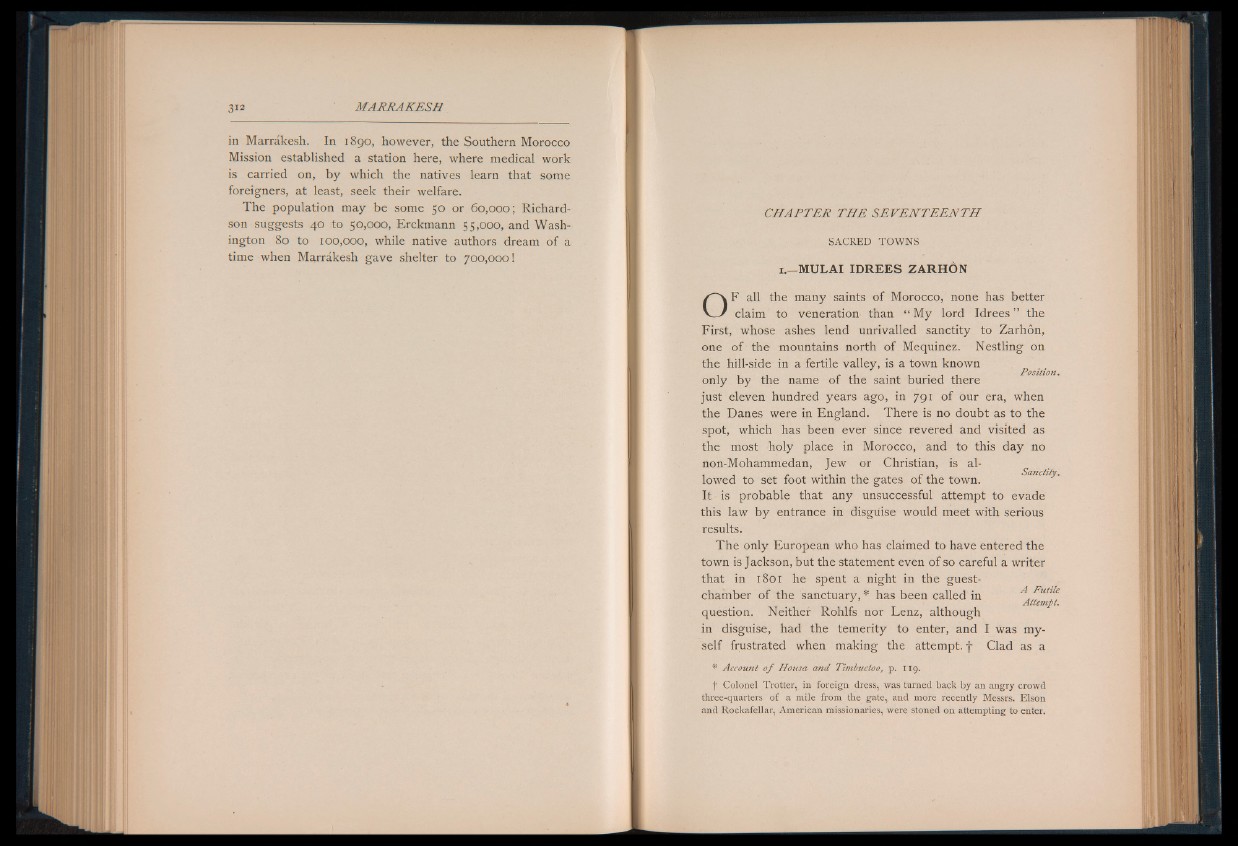
in Marrakesh. In 1890, however, the Southern Morocco
Mission established a station here, where medical work
is carried on, by which the natives learn that some
foreigners, at least, seek their welfare.
The population may be some 50 or 60,000; Richardson
suggests 40 to 50,000, Erckmann 55,000, and Washington
80 to 100,000, while native authors dream of a
time when Marrakesh gave shelter to 700,000!
CHAPTER TH E SE V EN T E E N TH
SACKED TOWNS
1.—MULAI IDREES ZARHON
OF all the many saints of Morocco, none has better
claim to veneration than “ My lord Idrees ” the
First, whose ashes lend unrivalled sanctity to Zarhon,
one of the mountains north of Mequinez. Nestling on
the hill-side in a fertile valley, is a town known
r i • , • 1 , Position. only by the name of the saint buried there
just eleven hundred years ago, in 791 of our era, when
the Danes were in England. There is no doubt as to the
spot, which has been ever since revered and visited as
the most holy place in Morocco, and to this day no
non-Mohammedan, Jew or Christian, is allowed
to set foot within the gates of the town.
It is probable that any unsuccessful attempt to evade
this law by entrance in disguise would meet with serious
results.
The only European who has claimed to have entered the
town is Jackson, but the statement even of so careful a writer
that in 1801 he spent a night in the guest-
chamber of the sanctuary, * has been called in ^AltCTHpt.
question. Neither Rohlfs nor Lenz, although
in disguise, had the temerity to enter, and I was myself
frustrated when making the attempt, f Clad as a
*' Account o f Housa and Timbuctoo, p. 119.
f Colonel Trotter, in foreign dress, was turned back by an angry crowd
three-quarters of a mile from the gate, and more recently Messrs. Elson
and Rockafellar, American missionaries, were stoned on attempting to enter.